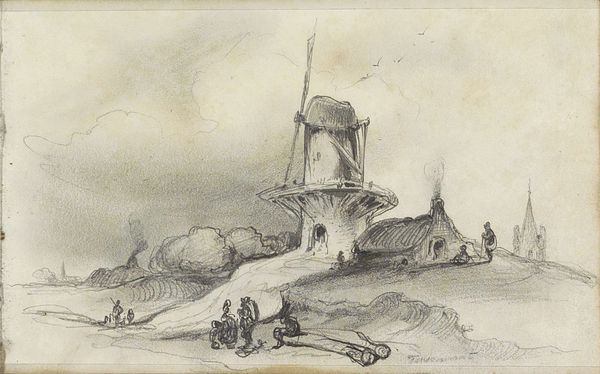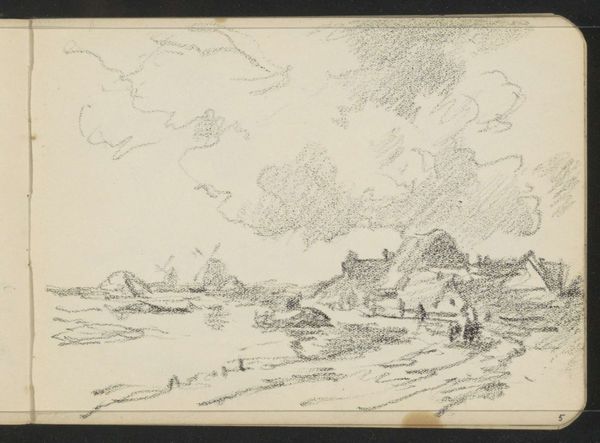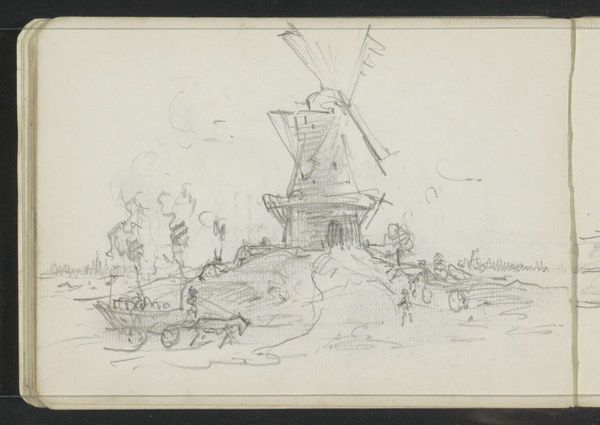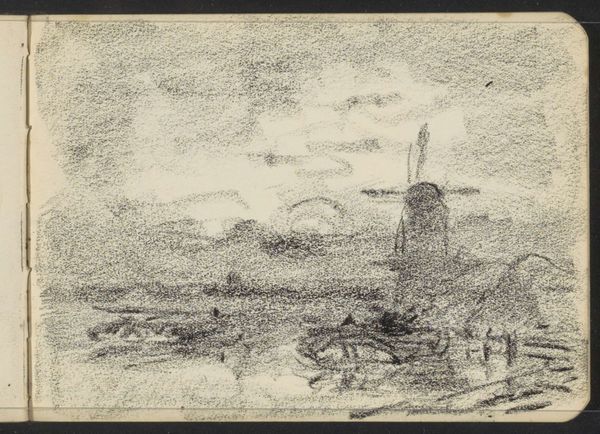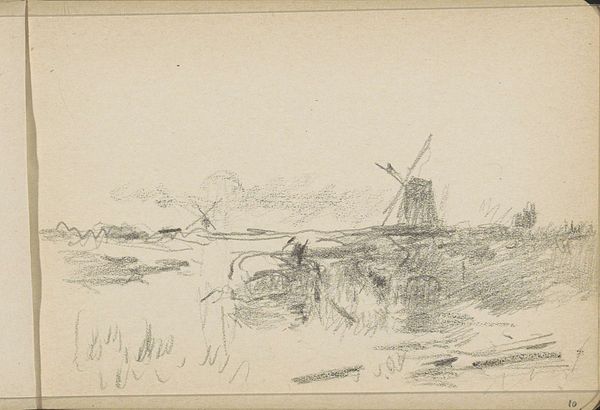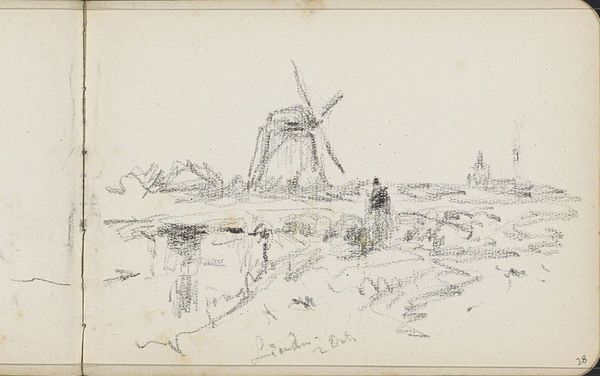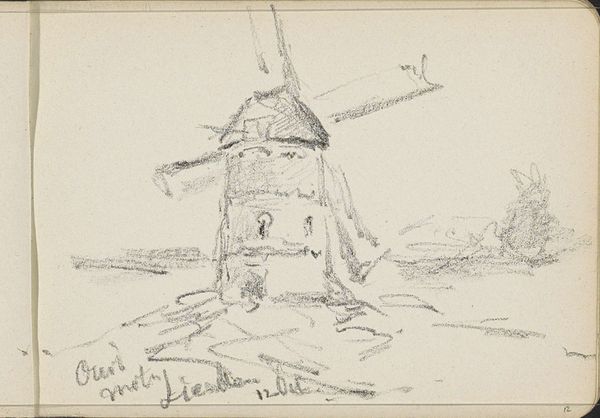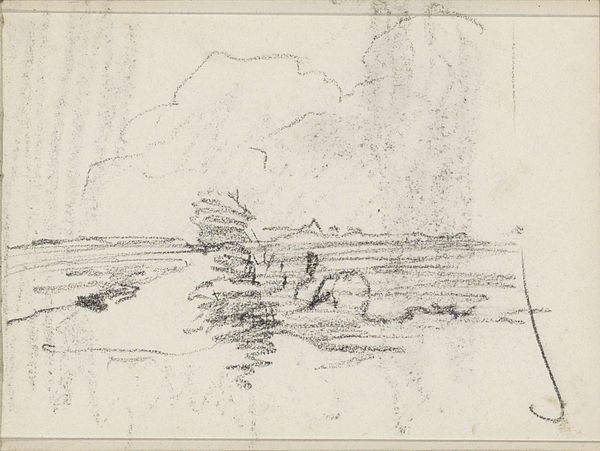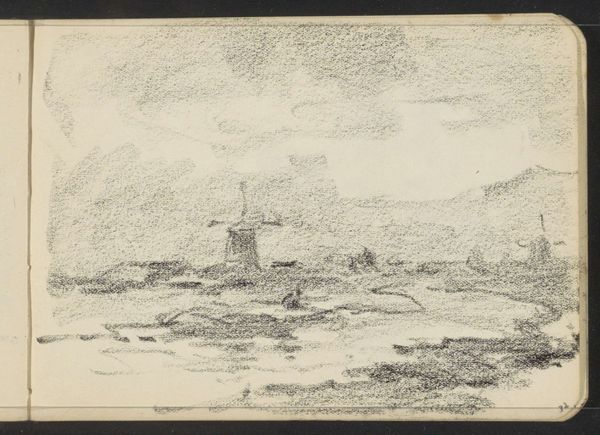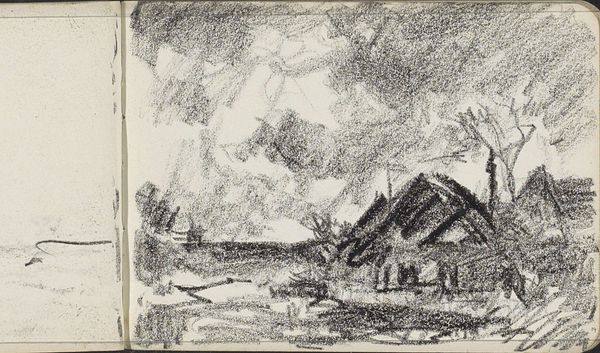
drawing, pencil
#
drawing
#
landscape
#
personal sketchbook
#
pencil
#
sketchbook drawing
#
storyboard and sketchbook work
#
sketchbook art
#
realism
Dimensions: height 115 mm, width 160 mm
Copyright: Rijks Museum: Open Domain
Curator: At first glance, I’m drawn to the rather brooding atmosphere of this pencil drawing. It’s almost entirely rendered in shades of grey, lending it a melancholy feel. What are your thoughts? Editor: Well, what you’re reacting to there reflects a particular artistic consciousness—that of Willem Cornelis Rip. The artwork, entitled "Molen aan een waterkant," which translates to "Mill on a Waterfront", made using pencil, comes from a personal sketchbook, dating from somewhere around 1914 to 1916, during a time when Europe was consumed by war. This historical context is absolutely vital when analyzing this and many other similar works. Curator: You’re right; a windmill itself can function as a powerful symbol. As a representation, in general it reflects local industry and hard labor, however, I wonder how the sociopolitical implications are layered here with the use of dark shading. Editor: I see your point. The traditional image of a mill is a beacon of productivity but here, the artist diminishes it, seemingly cloaking it in an aura of something far more ambiguous. We need to see these windmills not just as functional objects, but also how the artist imbues them with personal and collective memories and anxieties during the First World War. Curator: Do you also get a sense of temporality from the image’s content as well? To me it echoes a kind of nostalgia for rural life while anticipating modern life that was, for some, a menacing alternative. Editor: Yes! And, perhaps even the changing status of labor. Windmills at this time were already yielding to industrial alternatives and thus symbolized a sort of quiet desperation. So what do you think is communicated by situating this image within the confines of what seems to be a personal sketchbook? Curator: That further invites viewers to reflect on themes that touch us personally even today: what does it mean to strive, persist, and find meaning in times of great uncertainty and rapid change? Editor: It is amazing how much meaning is etched into the strokes within this one drawing. Curator: Indeed; it allows us to understand what might have moved or preoccupied a common person through their engagement with symbols in their time, giving way to broader discussions regarding culture, gender, and class too.
Comments
No comments
Be the first to comment and join the conversation on the ultimate creative platform.

